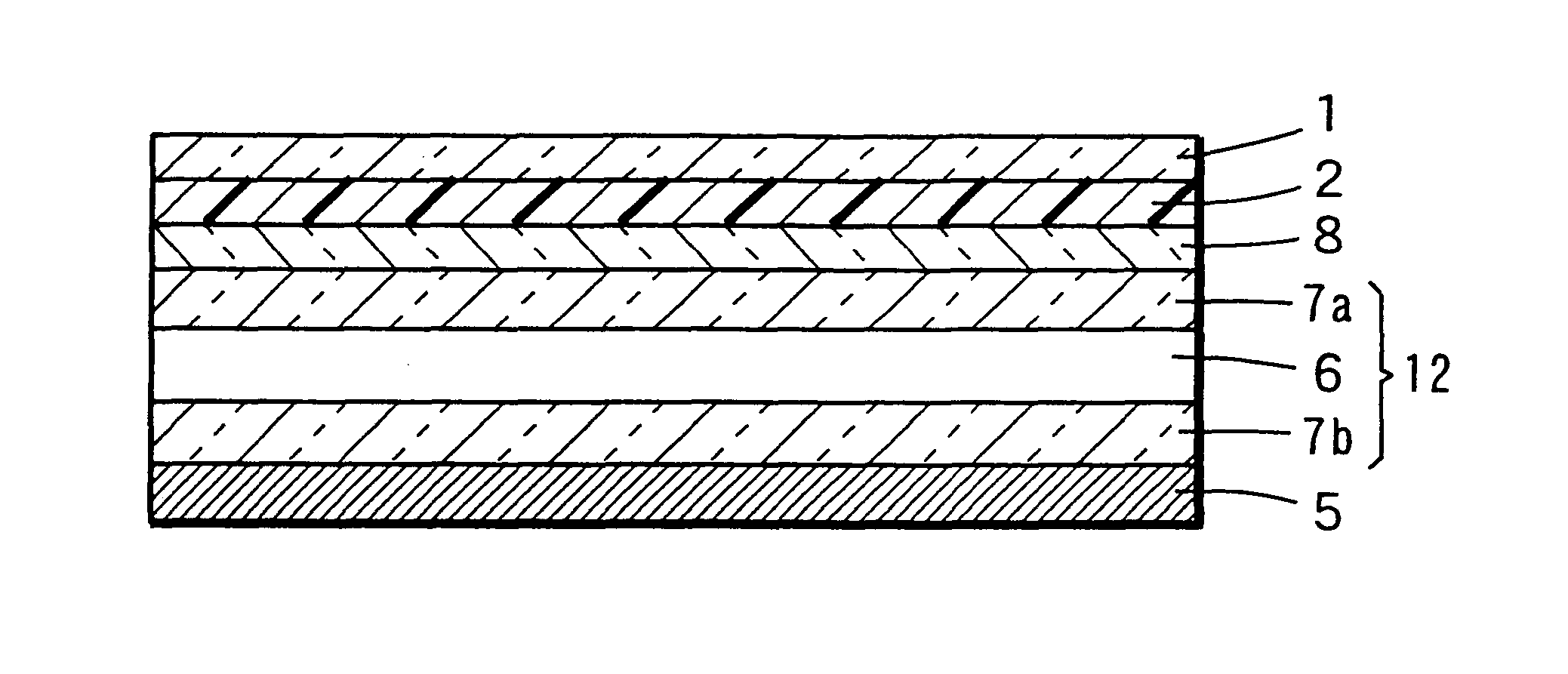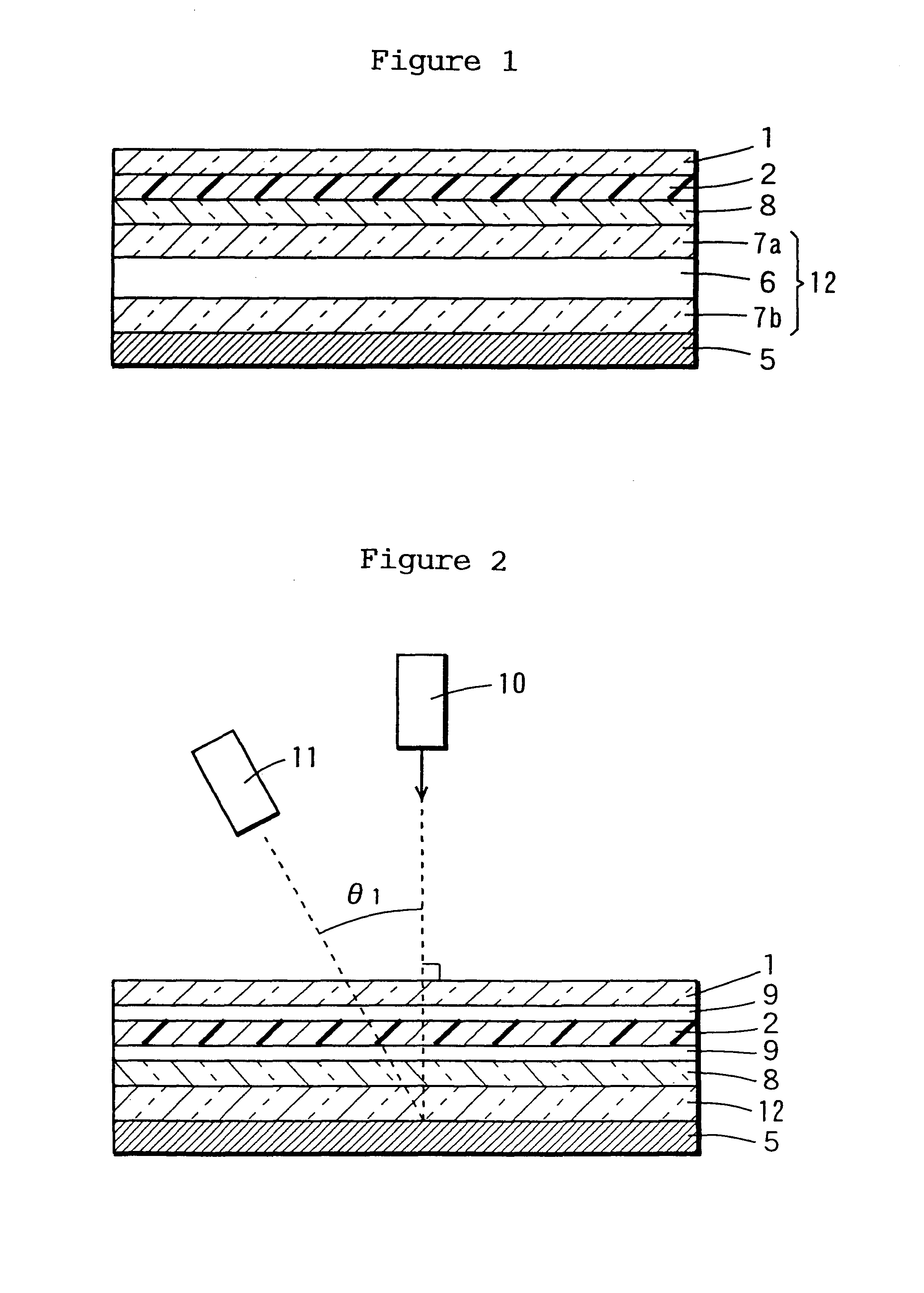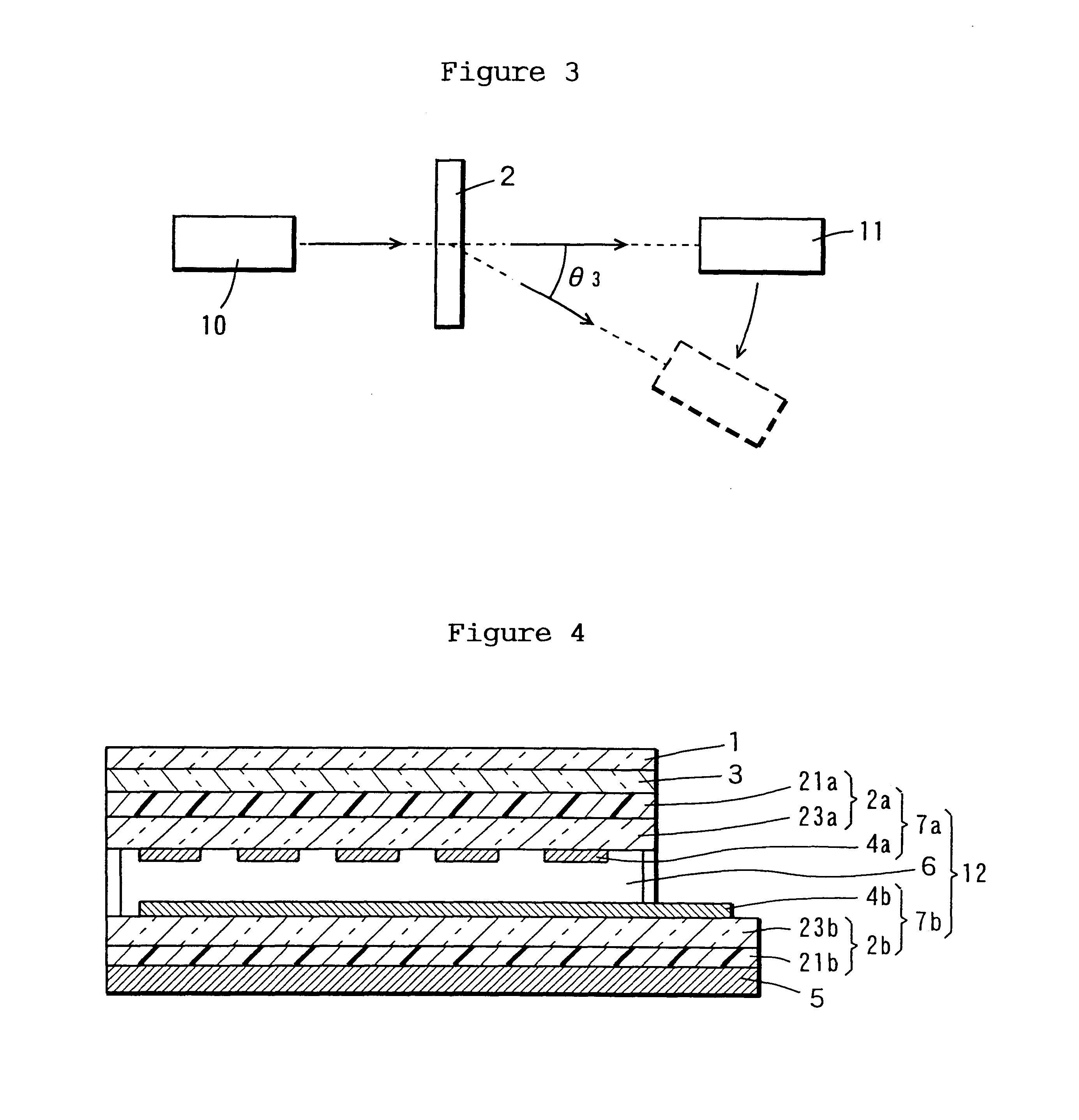Light scattering sheet, light scattering composite sheet, and liquid crystal display
- Summary
- Abstract
- Description
- Claims
- Application Information
AI Technical Summary
Benefits of technology
Problems solved by technology
Method used
Image
Examples
example 1
In 400 weight parts of a mixed solvent of methylene chloride and methanol (9 / 1, by weight) were dissolved 50 weight parts of poly(methyl methacrylate) (PMMA-4) and 50 weight parts of poly(styrene-co-acrylonitrile) (SAN-4). This solution was cast on a glass plate to form an 8 .mu.m-thick layer. The glass plate was heated on a hot plate at 280.degree. C. for 1 minute. After this heat treatment, the glass plate-resin sheet was dipped in a cold water bath. The sheet was peeled from the glass plate, spread on a frame and dried (thickness: 10 .mu.m). When examined with a transmission light microscope, the sheet thus obtained was found to have an intermediate structure between a bicontinuous structure and a particle dispersion (droplet) structure, the average interphase distance of the continuous phases being about 6 .mu.m. The total light transmittance of this sheet was 93%. A schematic diagram depicting the phase structure observed by transmission light microscopy is presented in FIG. 19...
example 2
Except that the temperature of heat treatment was changed to 250.degree. C. and the duration of heat treatment was changed to 3 minutes, the procedure of Example 1 was otherwise followed. The resulting sheet was examined with a transmission light microscope. As a result, the sheet was found to have an intermediate structure between the bicontinuous phase structure and the droplet phase structure, with an average interphase distance of about 6 .mu.m.
reference example 1
In 900 weight parts of a mixed solvent of methylene chloride and methanol (9 / 1, by volume) were dissolved 80 weight parts of cellulose triacetate (CEL-1) flakes. Then, 20 weight parts of PMMA powder (PMMA-5) was mixed and the mixture was cast to give a 150 .mu.m-thick sheet. When examined with a transmission light microscope, the sheet was found to have a droplet phase structure, the average diameter of droplets being 3 .mu.m. The total light transmittance of the sheet was 92%.
The performance characteristics of the light diffusing sheets obtained in Examples 1 and 2 and Reference Example 1 were evaluated by the following procedures.
(Directionality 1)
Using each of the light-diffusing sheets obtained as above, the reflecting type LCD model device shown in FIG. 2 was constructed. The device was illuminated with a laser beam (Nihon Kagaku ENG NEO-20MS) in a vertical direction from the front and the intensity (diffusion intensity) of reflected light at the diffusion angle .theta.1 was me...
PUM
| Property | Measurement | Unit |
|---|---|---|
| Angle | aaaaa | aaaaa |
| Angle | aaaaa | aaaaa |
| Angle | aaaaa | aaaaa |
Abstract
Description
Claims
Application Information
 Login to View More
Login to View More - R&D
- Intellectual Property
- Life Sciences
- Materials
- Tech Scout
- Unparalleled Data Quality
- Higher Quality Content
- 60% Fewer Hallucinations
Browse by: Latest US Patents, China's latest patents, Technical Efficacy Thesaurus, Application Domain, Technology Topic, Popular Technical Reports.
© 2025 PatSnap. All rights reserved.Legal|Privacy policy|Modern Slavery Act Transparency Statement|Sitemap|About US| Contact US: help@patsnap.com



